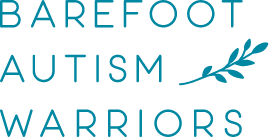5 things to ask yourself when your child regresses into autism symptoms and how to get back on track. Here’s how to deal with autism regression & plateaus.
Regression is heartbreaking. No matter if your child went from normal to autistic behaviour for the first time or if the child returns to autism symptoms after you have seen improvement after lifestyle changes.
I remember thinking: “I have spent countless hours and so much effort on lifestyle changes. Have I wasted my time? WTF? Is screaming, tantrums and meltdowns going to continue forever? What will happen to him in the future? How am I going to survive this?”
Take a deep breath. You have not wasted your time. You are learning. Regression is a message and the message is: It’s time to adjust and change SOMETHING. Our job is to find out what. I want to remind you that you are AMAZING. Mother intuition trumps EVERYTHING when it comes to collecting all the pieces of the healing puzzle for your child.
You are not alone. It’s part of the process of turning autism around. We all experience it. I experienced it regularly as I was turning autism around. Let me tell you that it is just a phase – not your new reality.
Yes, it can be so frustrating when we hit a plateau. Don’t worry. All autism mamas experience this. Plateaus simply mean: “Something’s gotta change.” I want to help you by sharing the 5 most common reasons why we see regression or strange symptoms so that YOU can turn this around. Here’s how to deal with autism regression.

1: Is the foundation in place?
Grounding, clean drinking water, light on the skin in the morning hours (ideally before 10 am), being outdoors, sleeping in a dark, cool room with no light or wifi? Otherwise, the damage created from nature deficiency (inflammation, low energy, hormonal issues, stress and sleep problems) will work against the healing process. I LOVE THIS INTERVIEW ABOUT HOW IMPORTANT FOUNDATION IS:

Remember foundation first.
2: What am I suppressing that my child expresses?
Children express what you suppress. Always. There is always an emotional message for you in your child’s behaviour and symptoms. When my inner child is cared for and I am a good parent to myself, my children THRIVE. Your child represents your body and your inner child.
So your child is regressing, screaming, holding his ears, refuses to eat? It’s time to ask yourself some tough questions. Questions are not logical and the answers will come from your intuition and your heart, not from your logical mind. Listen to whatever comes up..
Here are the questions I typically ask myself on the subject of how to deal with autism regressions.
“Where am I regressing in my life? How do I recognize a state of apathy or “freeze”?”
“What needs to change in my life that I am not taking responsibility for? Food? Love-life? Lifestyle? Speaking up for myself? Setting boundaries? Sleeping more? Not enough exercise/ too much exercise, etc?”
“How does my inner child feel about my parenting right now? What makes her want to scream in desperation? Is she heard, seen, fed, well-rested, loved and does she get her time outdoors to play?”
“Where do I not walk the talk when it comes to food, lifestyle and healthy path? Where is my child calling my bullshit? My lies? My procrastination?”
Come up with your own questions….

3: Is it time to adjust the diet?
Plateau’s do not necessarily mean: “BAD NEWS”. It often means – time to explore and adjust. What gets your child to one stage of the turnaround/healing, won’t get him/her to the next. If you have gone gluten-free and dairy-free and the body has had time to recover from the worst offenders, the child often calls you to step up the health food game. Here are the most common mistakes when it comes to diet:

FOLLOWING AN AUTISM DIET FOR TOO LONG
GAPS, vegan, vegetarian, Keto, Nemechek, etc. for too long (or ANY exclusion diet) will lead to malnutrition long term. Any “one size fits all” diet will make some children worse and other children will feel better. Until you learn to test and adjust according to your child’s feedback and biotype, it’s a game of Russian roulette. This is why I created the Autism Turnaround Nutrition and Lifestyle Academy with, Walsh trained, Dr Shaleen Barendse. So that you can take the lead in your child’s autism turnaround process.
In short: Exclusion diets WILL make some children worse or regress.
NOT EXCLUDING FOODS THAT CROSS REACT OR CREATE INFLAMMATION AND LEAKY GUT:
Processed gluten and dairy-free “junk food”, like cakes, bread, pasta. Glutamates can be a problem as well as foods that are high in histamine.
NOT DOING IT LONG ENOUGH:
You need to be a 100 % gluten and dairy-free for at least 6-8 months, for the body to recover.
NOT RESPECTING THE CYCLES OF SEASONS AND NATURE.
We are designed to eat what naturally grows where we live. We are not designed to eat the same things all year long. Try to adjust more to the seasons and rotating your child’s food. It’s also important to avoid food intolerances.

UNDERMETHYLATION, GLUTAMATES & COPPER
Most children on the spectrum deal with one or more of these issues. Undermethylation is misunderstood in most Biomed clinics and children are put on one size fits all nutrient protocols and diets and offered “bad” testing protocols.
For undermethylation (90 % of all children on the spectrum) a green diet or excess folate/folic acid can cause regression or worse symptoms. Glutamates can cause regression or symptoms (aggression, anger, anxiety). Excluding glutamates can be a very effective way of turning things around. Many of our children have gene variants that make it hard for them to convert glutamate to GABA and they tend to over-accumulate glutamate
4: Is it the brain?
The underdeveloped cerebellum is a common issue for children with learning and behavioural issues. We automate skills like learning, reading, writing, speaking, listening skills, eye tracking, emotional control, balance, social skills etc. by stimulating the cerebellum in early childhood. Many children have not hardwired those skills in childhood (especially not if the child has been put in a walker, jumper, stroller or not crawled enough or spent a lot of time indoors in front of screens.)
This means that they have to use the working memory, as a backup. The problem is that the working memory can only store 7 things at any given time. When it is full, it leads to stress, frustration, tantrums, and poor decision-making. Many children spin and stim to stimulate the cerebellum because it gives them a moment of peace. Rocking, eye-tracking exercises, balance exercises etc. can help.
5: Is it the supplements?
Lack of/overload certain vitamins and minerals can cause problems. I can’t state this enough. There are NO SAFE SUPPLEMENTS. One of the most common problems for autism moms which causes problems with behaviour and regression is “one size fits all supplement protocols” or multi-vitamins.
Consequently, it is a bad idea because there will often be at least one or two supplements in the multi-vitamin that will be problematic for your child unless you are working with a very skilled and experienced practitioner then good. Yet if not, the risk of side effects are very high with:
Fish oil
B vitamins
Copper
Multi-vitamins
That is why one of the main reasons I am creating an academy for parents with the most experienced Walsh practitioners in the world is that, so many parents waste money and time on protocols, tests, and supplements that either have no effect or make things worse. It is better to give your child a very nutrient-dense diet until you learn how to understand, test, interpret, and adjust the nutrients.


